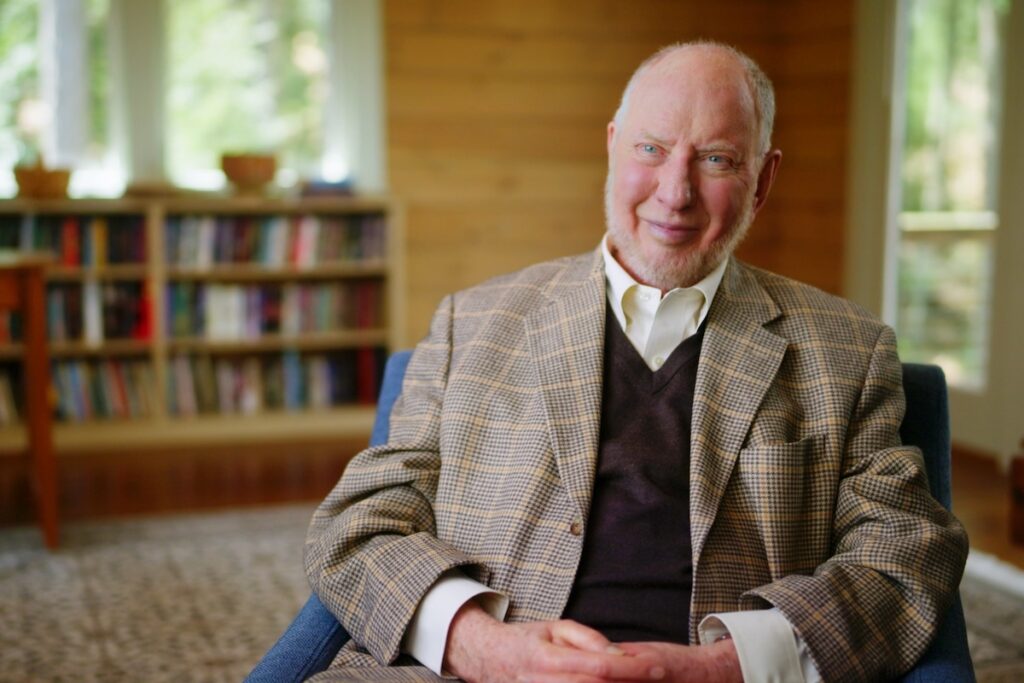Joiners Versus Loners: Documentary Extolls the Benefits of Interaction
Based on political scientist Robert Putnam’s 2000 book ‘Bowling Alone’ and the author’s life, the film argues that many of the problems stunting our country have their roots in community dissociation.

The new documentary “Join Or Die,” whose title derives from a snake cartoon popular during the time of the American colonies, argues that many of the problems stunting our country have their roots in community dissociation. This theory was first introduced by political scientist Robert Putnam, the renowned author of “Bowling Alone,” published in 2000.
That nonfiction best-seller and the author’s life form the basis for the doc, with glimpses of contemporary organizers and clubs providing mildly interesting context, if not proving Mr. Putnam’s point exactly.
The movie opens with a tour of the meeting space for the Waxahachie, Texas, chapter of the “Odd Fellows” society. It then quickly outlines the history of orders and clubs in America using graphs, photo cutouts, on-screen text, dollops of color, and more, creating a collage animation technique akin to an appealing, swiftly dense PowerPoint presentation.
The filmmakers will use this type of animation throughout to illustrate Mr. Putnam’s methods and conclusions, while also relying on stock footage, detective reels, and even a clip from Orson Welles’s “Touch of Evil” to further enliven the material beyond politicians and pundits such as Hillary Clinton, columnist David Brooks, and Mr. Putnam himself.

Now in his 80s, Mr. Putnam is particularly affecting when describing the impact President Kennedy’s iconic inauguration declaration, ”Ask not what your country can do for you — ask what you can do for your country,” had on him. Ironically, the country in which Mr. Putnam would begin his lifelong work would not be America but Catholic Italy.
In 1970, the Italian government decentralized some of its power among 20 regions, like states, and Mr. Putnam was able to trace from the ground floor up how some provincial democracies excelled and others did not. While wealth and technological advancement partly accounted for why some regions flourished, he also realized that social capital — such as singing in a chorus, playing on a sports team, participating at a local meeting, etc. — was the real key to explaining the data.
Back in America in the 1990s, a newspaper article’s mention of low membership in the local Parent Teacher Association sparks Mr. Putnam to look at civic engagement across the nation, which leads him to write an essay, which in turn becomes the basis for his famous, exhaustively researched book. Labor unions, considered crucial to social capital, are brought up as an example of shrinking community involvement, as are religious groups and, of course, bowling leagues.
There’s a visit to the Roper Center for Public Opinion Research, as well as a look at research from an advertising agency, DDB, whose data were traditionally used by companies to sell more product. The declining frequency of picnics and dinner parties comes up and, while intriguing, one wishes for a distinction between volunteering, associating with, and attending, between active and passive participation. (To be fair, the book may address this.)
Mr. Putnam’s efforts to put forward solutions to the “bowling alone” problem gets a general survey; he convened a committee that included a young Chicagoan community organizer, Barack Obama, and a former Republican congressman of Minnesota, Vin Weber, among others. Yet, developing strategies to increase social connection proves knotty, as some believe that a top-down approach doesn’t work with grassroots organizations and clubs. Even the explanations of the trend gush forth discordantly, though one stands out: The rise of television. Cue the montage of vintage TV sets and families on couches. As Mr. Putnam acerbically put it back then: “We’re now watching ‘Friends’ rather than having friends.”
Sister-brother directors Rebecca and Pete Davis judiciously devote a bit of screen time to criticisms of Mr. Putnam’s findings and contradictions inherent in his thesis, like the idea of individualism versus the communal, and the claim of reactionary nostalgia for a traditional, 1950s way of life. A few passages in their documentary also discuss how Black congregations and associations helped to foment the civil rights movement, and how, conversely, shared racism twists social capital’s vaunted goals, with economist Glenn Loury and author/academic Eddie Galude providing pointed commentary.
At times overly earnest, the doc’s final half-hour explores Mr. Putnam’s later-day research into turn-of-the-last-century political polarization and economic disparity, as reflected in his 2020 book “The Upswing,” co-written with entrepreneur Shaylyn Romney Garrett. Parallels are drawn with the mood in the country today, yet the ubiquity of digital “social networks” is barely mentioned.
Beyond the health of our democracy, much of the succinct film’s discourse circles around the issue of isolation. Maybe, as “Join Or Die” suggests, a re-engagement in face-to-face clubs and more neighborly interaction can combat the “epidemic of loneliness” we’ve all heard about and sense around us. If so, sign me up.

